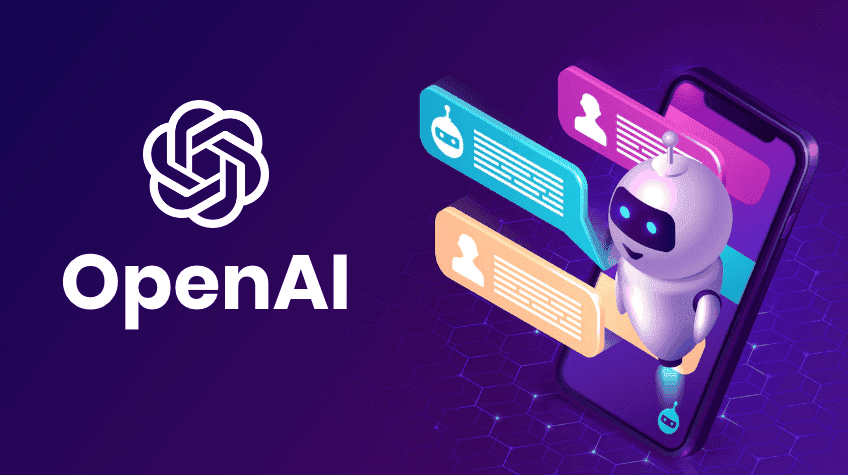In the fast-paced world of social media management, staying ahead of the curve is essential for businesses to effectively engage with their audience. As we step into 2024, the landscape of social media management is set to be revolutionised by the rise of ChatGPT and AI content generators.
In this blog post, we will explore the future of social media management in the Social Media Management Association of Australia (SMMAA) and how ChatGPT and AI content generators are reshaping the industry and we’ll take a deeper dive into generative AI, from its history to the best way to leverage it — and when it’s not going to be the best option for getting great results.
The Rise of ChatGPT and AI Content Generators
The release of the ChatGPT chatbot by OpenAI this past December has been a watershed moment for mainstream interest and adoption of AI. ChatGPT acquired over a million users in 5 days after its release, shattering records for adoption speed by previous AI tools such as OpenAI’s image generator DALL-E. As people played with the (for now) free interface, tales of user experiments generated seemingly omnipresent buzz across social media and tech news outlets.
While the use of automated content creation methods is nothing new, the new generation of AI-enabled tools are a class of their own due to recent developments in machine learning. ChatGPT’s ability to instantly and effortlessly generate text on almost any topic has made it seem like an intriguing option for business owners and content creators looking for ways to automate and streamline content creation. But let’s take a look at what’s going on underneath the hood.
Transformers, GPT-3, and ChatGPT
In 2017, the Google Research team released a paper called “Attention is All You Need,” which introduced a new neural network architecture for natural language understanding — called transformers — that can generate language models with significantly less training time.
In 2018, OpenAI released Generative Pretrained Transformer 2 (GPT-2), a transformer-based language model that used deep learning to generate text. GPT-2 was the first large-scale language model to use a large amount of unsupervised training data. It was followed shortly after by the next-generation GPT-3, which improved on GPT-2 in both accuracy and size.
GPT-3 is one of the most powerful language models currently available and is the basis for ChatGPT as well as most other AI writing tools on the market. ChatGPT is a variant of the GPT-3 model specifically designed for chatbot applications; when you chat with ChatGPT, you’re actually using GPT-3.
GPT-3 is also the basis for the wave of new AI writing tools, such as Jasper and Copy AI, that have flooded the market. While there are other non-OpenAI models (and surely more to come), most of these tools are using OpenAI APIs to generate text using GPT-3.
How AI Text Generation Works
So how does GPT-3 generate text on command from a simple prompt? Is it compiling content from existing sources, rewording existing text like infamous ‘article spinners,’ or actually writing original content?
Well…. None of the above, really. Let’s ask ChatGPT itself:
ChatGPT and GPT-3 use a type of neural network called a transformer to generate text. The transformer architecture is based on an attention mechanism that allows the model to weigh the importance of different parts of the input when making a prediction. In the case of GPT-3 and ChatGPT, the input is a sequence of words and the model’s goal is to predict the next word in the sequence. To make a prediction, the model takes in the input sequence and uses the attention mechanism to focus on certain parts of the input. It then uses this information, along with its internal state, to generate a probability distribution over the vocabulary of possible next words. The word with the highest probability is then chosen as the model’s prediction and added to the input sequence, which is then fed back into the model to generate the next word. This process is repeated until the model generates a complete text.
A Language Prediction Model, not a Thinking Machine
Breaking it down, what we see is that GPT-3 and similar models aren’t actually creating text as much as they’re predicting it. They generate words based on a given input, constructing sentences word by word, and selecting the most likely token (common sequences of characters) that should come next.
It’s really cool, but it also isn’t really writing per se, as writing is an expression of thought. AI models lack the ability to think or to fully understand the complexity of human communication. While they can generate words, they don’t have the ability to comprehend the meaning behind those words. They don’t have a memory, or an understanding of the concepts being discussed; rather, they probabilistically assemble text based on associations between them.
Unlike AI assistants such as Siri or Alexa, GPT-3-based models don’t use the internet to locate answers. They arrive at an answer by making a series of guesses based on the input, which is one major reason why it’s a bad idea to rely on them for unchecked content automation.
AI Content and Organic Search
For most B2B companies creating content online, organic search traffic is their primary source for generating views and leads from written content. After all, what good is your content if no one actually finds it? This is another area were relying on AI-generated content can get you into trouble.
The impact of using AI-generated content to rank in organic search has been a topic of debate and speculation by SEO professionals over the previous year. Can you rank on Google just by using AI content?
The answer isn’t straightforward, but here’s what we know:
- In April 2022, Google Search Advocate John Mueller said that content generated using AI writing tools is against Google Webmaster Guidelines.
- Google released its “helpful content” update in August 2022, which prioritises content “by people, for people.”
- October saw the release of a Google spam update, which hit many sites that relied on AI-generated content hard. According to Neil Patel, his portfolio of AI sites lost 18% of their traffic after the update.
- This January (2023), Google responded to brands increasingly using AI to reiterate that the issue isn’t necessarily using AI, it’s creating content solely for search rankings, rather than creating helpful content that users want.
- This February (2023), Google published a developer guide called “Google Search’s guidance about AI-generated content“, with tips for content creators looking to utilise AI technologies.
So, is using AI-generated content a good idea for search?
Yes, as long the content is helpful, original and makes sense.
To quote Google: “As explained, however content is produced, those seeking success in Google Search should be looking to produce original, high-quality, people-first content demonstrating qualities E-E-A-T.”
AI tools lack the firsthand experience to create the type of content required by Google and expected by readers. But that doesn’t mean there isn’t a place for AI to help you create original, helpful content that both readers and Google will love.
5 Reasons AI Content isn’t Fully Ready to power your Marketing
If you’ve played around with ChatGPT, you’ve noticed that GPT-3 is impressive. It feels like magic. With the ability to generate text with a simple prompt, could this be the solution to automate your B2B content output once and for all?
Possibly, but this magical appearance can blind you to the process, and the limitations in using AI to generate blog posts and other marketing content. Here are five reasons current AI tools can’t create good written content for your business.
1. AI can be factually wrong or provide biassed outputs
One of the well-documented weaknesses of GPT-3 so far is that it can provide information that is just plain factually wrong. That’s because of how the model works, where it probabilistically predicts text rather than pulling information from vetted Internet sources.
OpenAI knows this, which is why ChatGPT a comes with a warning that “ChatGPT sometimes writes plausible sounding but incorrect or nonsensical answers,” and “the system may occasionally generate incorrect or misleading information and produce offensive or biassed content.” AI models also typically take time to train, and therefore don’t have access to the latest information, making their outputs outdated on timely topics such as statistics or current events.
2. AI-generated content doesn’t have any sources
Because of how transformers generate text, AI-generated content doesn’t contain any actual sources, since assertions aren’t actually coming from anywhere specifically. That means that it’s impossible to verify claims without conducting additional manual research (there’s no bot that can do it). Further, the content itself won’t contain any sources, links or connections to existing information, which is crucial not only for SEO but as a basic best practice for any type of online writing or journalism.
3. AI doesn’t understand your customers
Good content speaks to the hopes, dreams, pains, and challenges faced by its audience. But AI can’t spot your customer’s pain points. It’s impossible to empathise with your audience. It doesn’t just not understand your customers; it doesn’t understand humans in general — and there are times when that’s going to make a critical difference.
4. AI can’t create thought leadership or a brand voice
Creating engaging, worthwhile thought leadership content comes from having a point of view. It combines your unique perspective, experience, lessons learned, insights, and stories and connects that specific expertise to offer insights no one else can — in a way that is helpful to your industry and audience.
There’s no shortcut to this. Trying to use AI to do it is no different than turning to cheap content farms to crank out generic content. Not only does it not help your brand, it’s likely to hurt it.
5. AI isn’t human
We’re not against technology in the slightest here, just to get that straight. But it’s a truism in sales and marketing that “people buy from people.” This is especially true with good content. The best content transcends a detached, generic voice to give a glimpse of the human on the other side.
AI writing is often cold, lacks personal anecdotes and original opinions, and usually fails at keeping a coherent narrative. Communication is subtle, ever-evolving, and human — AI can’t credibly communicate on a human level.
Remember, AI needs source data to draw on. It can’t create actual leading thoughts. It can only reiterate what’s already been said. If you’re trying to stand out as a brand, re-concentrating the same-old stuff isn’t going to help make that case.
Where and when to use AI Tools for Content Creation and Generation
While it’s not a good idea to rely on AI writing tools to generate long-form content, such as blog posts, eBooks, or thought leadership articles, there are great use cases for AI to augment your content creation process. The key is to find ways to leverage AI tools in your current content processes. A writer or content manager can leverage AI writing tools to be a great assistant:
- Brainstorm topic ideas by asking questions and seeing how it responds.
- Have the AI tool construct outlines and briefs to provide to writers (but make sure to not entirely rely on AI-generated briefs or outlines to give to your writers).
- Use AI to proof, edit, and refine human-written drafts for spelling, grammar, tone, etc.
- Put AI to work creating short-from copy for use in ads and emails.
- Leverage AI tech to create social media titles, descriptions and tweets.
- Generate product descriptions with AI.
- Assign AI to summarise longform original pieces (to create meta descriptions or intro summaries), or existing, third-party information (such as market research).
There’s no need to ignore the AI revolution taking place. Just approach AI as it’s intended to be used — as a tool and an assistant, not a replacement for human writers, content strategists, and marketers. AI-generated content may be doomed to the dustbin, but AI-assisted content can help you more easily scale production of the types of unique pieces that will educate and resonate with your audience.
6 Tools to Detect low quality AI Generated Content
While it’s often easy to distinguish between content written by a human and an AI, this isn’t always the case, especially on more straightforward, informational topics. As the use of AI-generated content grows, so do the tools to detect and recognize automated content.
If you’re a B2B marketer or executive working with outsourced writers, you want to be sure that the content they’re creating has a human touch and wasn’t just outsourced to an AI tool – just like you want to make sure it wasn’t plagiarised. But with AI writing tools increasing in sophistication, you might not want to spend your already limited time scrutinising the content yourself.
When in doubt, here are five tools to test if content is AI-generated:
- Originality.AI. Created specifically for web publishers and agencies, Originality.AI can detect ChatGPT, GPT 3, and GPT 3.5 content with high levels of accuracy and also works as a plagiarism detector.
- Crossplag’s AI content detector. Paste or write your content and instantly detect AI-generated content with an accurate rating score bar.
- Writer’s AI content detection tool. Writer is an AI writing platform, but they also have a content detector tool that works on GPT-3 and 3.5 and ChatGPT.
- Content at Scale’s AI content detection tool. Like Writer, Content at Scale is an AI content generation platform, and this tool can also detect GPT-3, 3.5, and ChatGPT.
- Giant Language Model Test Room (GLTR). A collaborative effort between MIT-IBM Watson AI lab and Harvard NLP, GLTR works to detect GPT-2 content.
- Hugging Face GPT-2 Output Detector. Hugging Face is a leading machine learning community, and this demo detects GPT-2 output.
AI Can’t Fully Replace a Culture of Content…Yet
Creating a holistic content strategy and content production process isn’t something that you can just outsource to an AI tool (not yet anyways!), but that also doesn’t mean you have to do it alone.
To learn more about best practices for your content program, check out our articles on:
- Building your content creation engine (then you can plug in AI tools where they can help)
- Creating a culture of content where you can leverage your organisation’s collective knowledge.
- Content ideation tips and working with Sales to cover the topics that matter to your audience.
Looking for a fresh perspective or additional resources on your content strategy? Looking for guidance on how best to use the new AI tools available to benefit your brand and marketing? Consider us an extension of your marketing team. We would love to talk about your content creation challenges and how to solve them.











